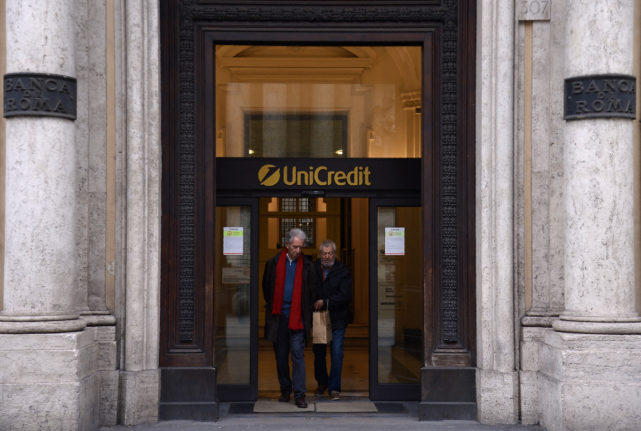There are various reasons why you may want to close your Italian bank account.
Perhaps you’re packing up and leaving the country, or maybe you’ve just had enough of steep maintenance fees and are looking to switch to a different bank.
Whichever reason you may have to close your Italian bank account, doing so may not always be straightforward, especially if you’re not familiar with the ins and outs of the process.
How long does it take?
Bank accounts in Italy can be closed at any time and without prior notice.
It generally takes between six and 15 working days from the day you submit the request for the bank to close the account.
READ ALSO: The verdict: What are the best banks for foreigners in Italy?
However, under an EU directive adopted in March 2015, if you ask for your account to be transferred to a different bank, this will have to happen within 12 working days from the day of the request. If the bank in question fails to comply, you’ll automatically be entitled to compensation.
Is there a charge?
As of 2006, closing a bank account in Italy is entirely free, meaning you won’t face any closing fees or penalties.
Having said that, any outstanding maintenance fees or stamp duty (imposta di bollo – this only applies to accounts whose average balance exceeds €5,000) will be automatically deducted before the account is closed. The same goes for any unpaid fees related to extra services connected to the account, including credit card costs.
Is there anything I need to do before closing the account?
Before requesting that your account be closed, you’ll have to make sure you have a positive balance and stop or transfer to a different account any direct debits or recurring payments.

You’ll also have to complete any pending banking operations, including transfers.
Do I have to go to the branch to cancel?
Though some smaller institutes may still specifically require clients to close an account in person, most major banks in Italy currently allow customers to close an account remotely by sending a registered letter (lettera raccomandata) to the relevant branch or a PEC message to the branch’s email address.
READ ALSO: Can I open a bank account in Italy as a non-resident?
In either case, the message should enclose your account details, a completed cancellation form (this can usually be found on the bank’s website) and all the required documentation, including a copy of a valid form of ID.
That said, while it may be possible to submit an account closure request without visiting your branch, you may still be asked to return any debit or credit cards, or, if applicable, your chequebook in person.
Should you not be able to do so (for instance, because you live abroad) you’ll have to get in touch with the bank to make different arrangements.
Things are generally far more straightforward when transferring an account to a different Italian bank as the new institute will handle the process for you (including the closure of the former account) and you may not be asked to visit the ‘old’ branch at all.
What about closing joint accounts?
If you have a joint account with ‘conjunct signature’ (firma congiunta) authorisation, the cancellation request must be signed by all named account holders.
READ ALSO: Which documents do I need to open an Italian bank account?
If you have a joint account with ‘disjunct signature’ (firma disgiunta) authorisation, the request can be signed by just one holder.
Can I close the account if I have a mortgage?
Under Italian law, banks cannot force customers to keep an account open for the purpose of managing other banking products, including a mortgage.
This means that you can close your account with the bank granting the mortgage, and keep making payments from a different account.
However, you’ll have to make the transfer prior to submitting your account closure request.



 Please whitelist us to continue reading.
Please whitelist us to continue reading.
Member comments